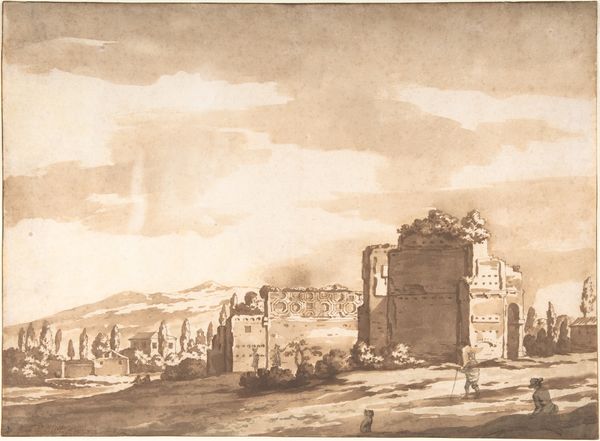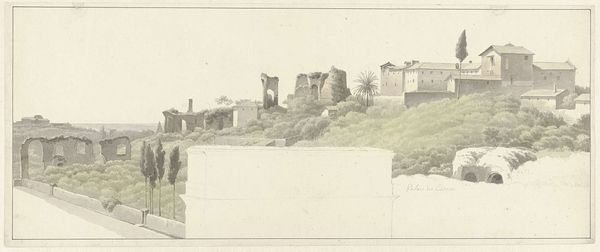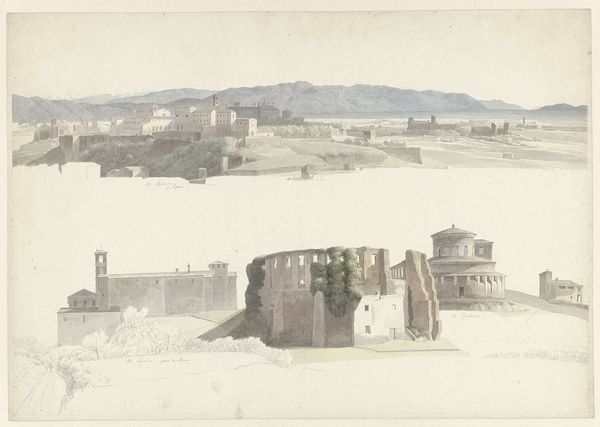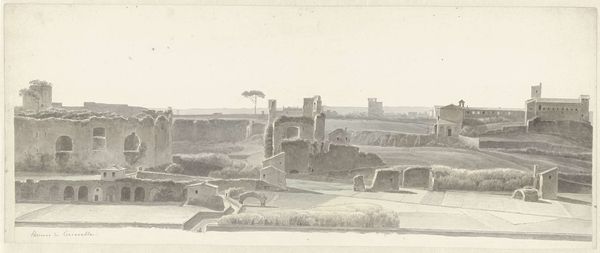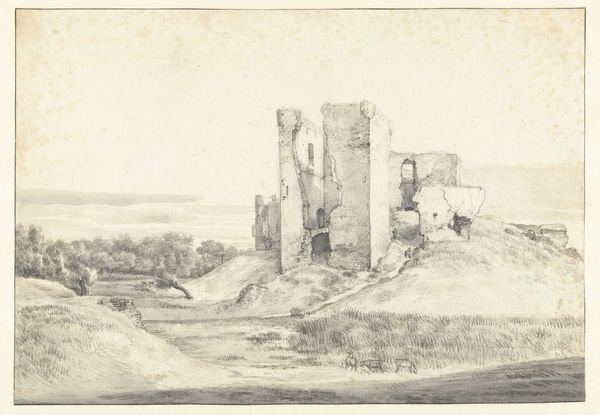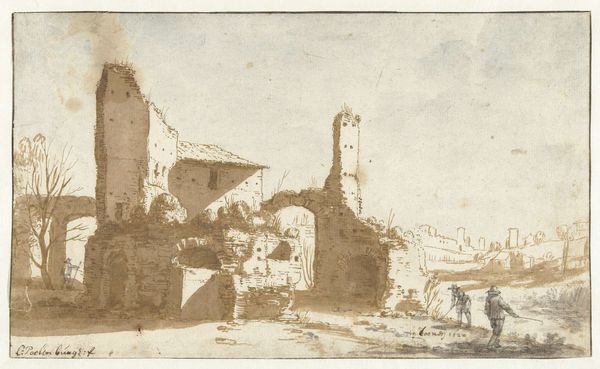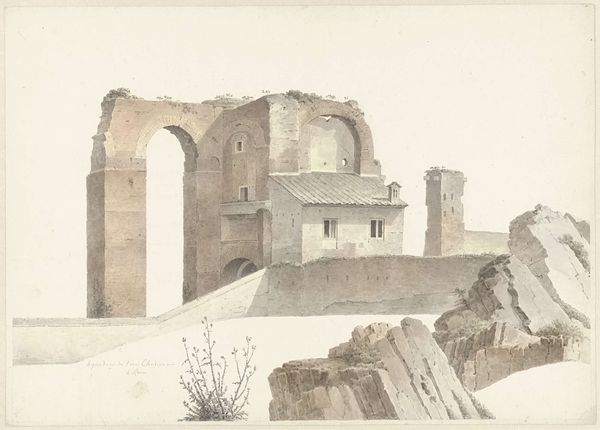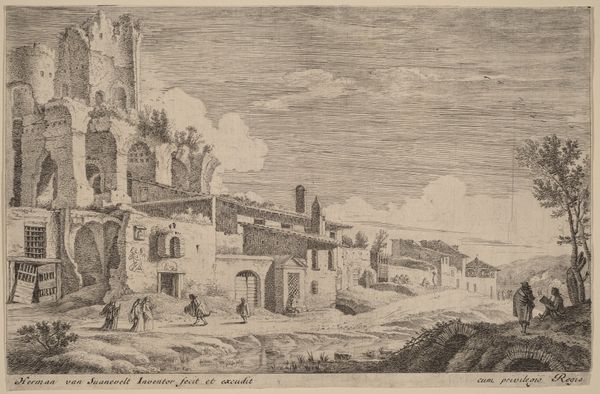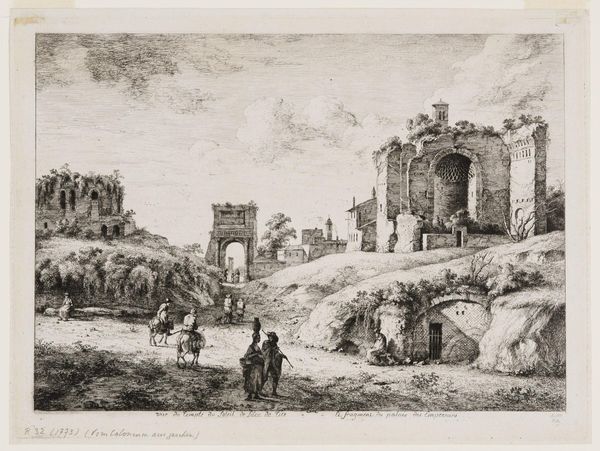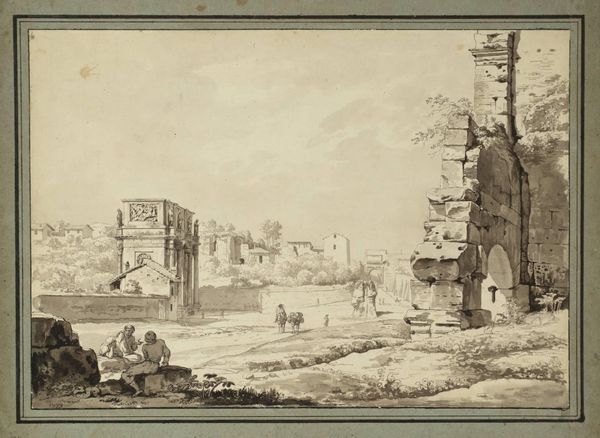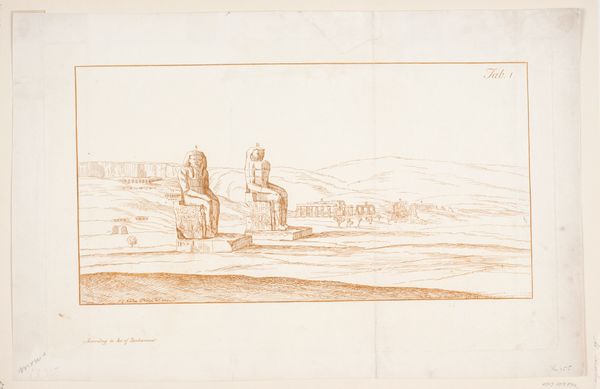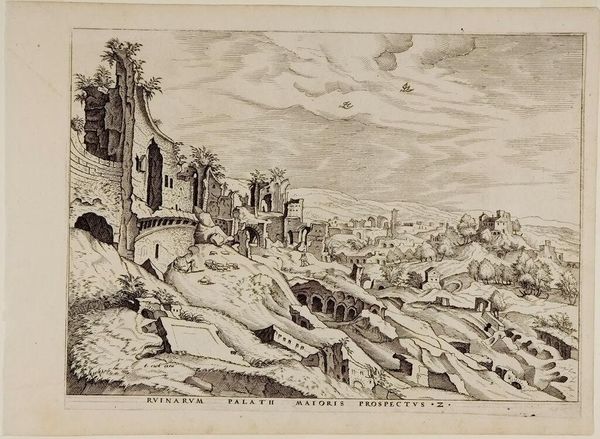
View from the Villa Mattei (now Villa Celimontana) in Rome c. 1809 - 1812
0:00
0:00
drawing, pencil
#
drawing
#
neoclacissism
#
pencil sketch
#
landscape
#
perspective
#
pencil
Dimensions: height 365 mm, width 510 mm
Copyright: Rijks Museum: Open Domain
Curator: Looking at Josephus Augustus Knip's pencil drawing, "View from the Villa Mattei (now Villa Celimontana) in Rome," dating from around 1809 to 1812, I'm immediately struck by the contrast between decay and vista. There's a sense of something crumbling, yet also expansive hope. Editor: Indeed, there is a potent melancholic feeling to it. The broken classical sculptures, almost like disregarded toys, and then the Roman landscape rolling away behind them evokes an awareness of mortality and how even the grandest achievements will fade over time. The man sitting on the building, far off in the composition is reminiscent of the “Watcher.” Curator: It's like Knip’s contemplating time itself. The drawing's Neo-Classical elements show a desire for order and reason. This is in stark contrast with the ruined buildings suggesting a confrontation between a cultivated, ordered past and the ragged edges of the present. I feel that the artist's intentional focus on the architectural ruins is not merely a pictorial strategy but also an emotional reflection. Editor: That's so insightful. Notice, also, how nature is subtly reclaiming what was once defined. See those tendrils growing on the stone; the image hints at an intrinsic cycle of creation, destruction, and regeneration, the core imagery we continue to come back to, throughout history. This speaks to civilization as a brief parenthesis within a more significant organic process. I like the high horizon that, as in the Romantic tradition, turns our vision toward the sky, adding a divine element to the idea of continuous becoming and decay. Curator: Absolutely. And if you look carefully, there is a man at the top of the distant tower, that element is repeated by the image on the ruin: a possible association of the individual and cultural memory, observing the passage of time but inevitably being overtaken. Editor: Yes! As though Knip wants us to question our sense of permanence, to re-think our cultural memories that we take as foundations. This drawing prompts us to ask what we want to immortalize from ourselves. Curator: I couldn’t agree more; it’s as though Knip laid out all of Rome and asked “What shall endure?” Editor: That is such an astute comment. Considering this artwork, I appreciate the sense of being part of something bigger, like a cosmic breath: the in-breath of growth, and the out-breath of dissolution. I suppose all images ultimately explore this polarity in their unique way.
Comments
rijksmuseum about 2 years ago
⋮
The Villa Mattei was built on the site of an ancient vineyard on the western slope of the Caelian Hill in the course of the 16th century. When Knip was sojourning in Rome, the park was in a ruinous state. All manner of sometimes partially overgrown architectural fragments lay strewn about the park.
Join the conversation
Join millions of artists and users on Artera today and experience the ultimate creative platform.


